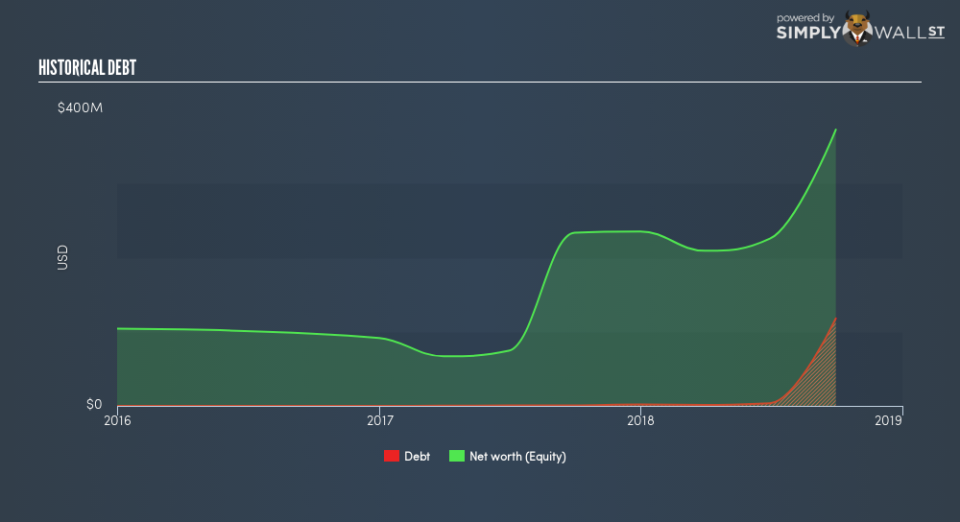Are Redfin Corporation’s (NASDAQ:RDFN) Interest Costs Too High?

Investors are always looking for growth in small-cap stocks like Redfin Corporation (NASDAQ:RDFN), with a market cap of US$1.7b. However, an important fact which most ignore is: how financially healthy is the business? Since RDFN is loss-making right now, it’s vital to evaluate the current state of its operations and pathway to profitability. Here are a few basic checks that are good enough to have a broad overview of the company’s financial strength. Nevertheless, given that I have not delve into the company-specifics, I recommend you dig deeper yourself into RDFN here.
How does RDFN’s operating cash flow stack up against its debt?
RDFN has built up its total debt levels in the last twelve months, from US$705k to US$118m , which includes long-term debt. With this growth in debt, RDFN’s cash and short-term investments stands at US$449m , ready to deploy into the business. Moving onto cash from operations, its trivial cash flows from operations make the cash-to-debt ratio less useful to us, though these low levels of cash means that operational efficiency is worth a look. For this article’s sake, I won’t be looking at this today, but you can examine some of RDFN’s operating efficiency ratios such as ROA here.
Can RDFN pay its short-term liabilities?
With current liabilities at US$60m, the company has maintained a safe level of current assets to meet its obligations, with the current ratio last standing at 8.57x. Having said that, a ratio greater than 3x may be considered high by some.
Does RDFN face the risk of succumbing to its debt-load?
With debt at 32% of equity, RDFN may be thought of as appropriately levered. This range is considered safe as RDFN is not taking on too much debt obligation, which can be restrictive and risky for equity-holders. Investors’ risk associated with debt is very low with RDFN, and the company has plenty of headroom and ability to raise debt should it need to in the future.
Next Steps:
RDFN’s debt level is appropriate for a company its size, and it is also able to generate sufficient cash flow coverage, meaning it has been able to put its debt in good use. Furthermore, the company will be able to pay all of its upcoming liabilities from its current short-term assets. This is only a rough assessment of financial health, and I’m sure RDFN has company-specific issues impacting its capital structure decisions. I recommend you continue to research Redfin to get a more holistic view of the stock by looking at:
Future Outlook: What are well-informed industry analysts predicting for RDFN’s future growth? Take a look at our free research report of analyst consensus for RDFN’s outlook.
Valuation: What is RDFN worth today? Is the stock undervalued, even when its growth outlook is factored into its intrinsic value? The intrinsic value infographic in our free research report helps visualize whether RDFN is currently mispriced by the market.
Other High-Performing Stocks: Are there other stocks that provide better prospects with proven track records? Explore our free list of these great stocks here.
To help readers see past the short term volatility of the financial market, we aim to bring you a long-term focused research analysis purely driven by fundamental data. Note that our analysis does not factor in the latest price-sensitive company announcements.
The author is an independent contributor and at the time of publication had no position in the stocks mentioned. For errors that warrant correction please contact the editor at editorial-team@simplywallst.com.

 Yahoo Finance
Yahoo Finance 
